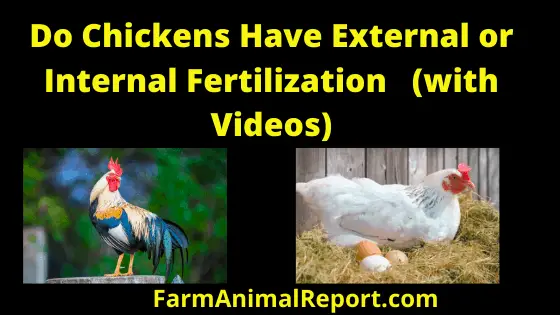As a general rule Simply, the fertilization in the chicken is internal means to say that the fusion of male and female gametes takes place inside the female body. In oviparity, the eggs are laid outside the female’s body and develop there. The fertilized egg receives its nourishment from the yolk, which is part of the egg. For chicken eggs to be fertilized, the rooster must mate the female chicken before forming eggs. Though, the hen does not necessarily require the presence of the rooster at the time of laying the eggs.
Chicken Internal or External Fertilization
Do Chickens Have External or Internal Fertilization? Simply, the fertilization in the chicken is internal means to say that the fusion of male and female gametes takes place inside the female body. In oviparity, the eggs are laid outside the female’s body and develop there. The fertilized egg receives its nourishment from the yolk, which is part of the egg. Chicken Internal or External Fertilization
This occurs in most bony fish, many reptiles, some cartilaginous fish, some amphibians, two mammals, and all the birds.
Check Out Amazon for Educational Resources for Breeding Chickens
How do Chicken eggs get Fertilized – For chicken eggs to be fertilized, the rooster must mate with the female chicken before forming eggs. Though, the hen does not necessarily require the presence of the rooster at the time of laying the eggs.
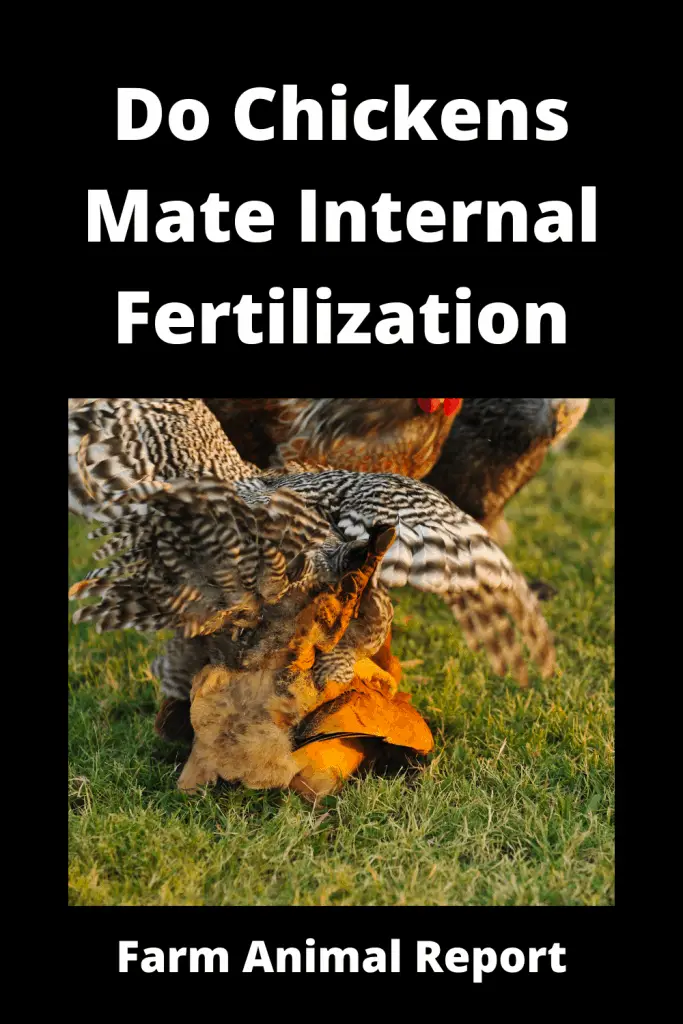
1. The Rooster Does His Part.
Roosters have reproductive organs, not unlike mammals, with testes that produce sperms. The sperms travel down tubes called vas deferens to sperm sacs.
During mating, an unceremonious affair that lasts less than 20 seconds, the sperms leave through the opening called cloaca and enter the female through an entrance to her reproductive tract, called the oviduct. From there, the sperms make their journey through the reproductive organs of the female.
12 Ways to Make Money by Chicken Farming—Extensive Guidelines for Chicken Farmers
They may take a week or more; they swim through the hen’s shell glands, then a narrowing in her reproductive tract called the isthmus, followed by the magnum and the infundibulum. There, they wait for the arrival of eggs in the process of farming.
2. The Hen Also Does Her Part.
A hen’s egg begins as a yolk in the ovary, and once released, they pass into the infundibulum, a funnel-shaped organ where the sperms are waiting. They are fertilized eggs and move out of the chicken via the same route the sperm entered.
The egg white gathers around the yolk in the magnum. In the isthmus, the shell membrane is laid down. The shells form and hardened in the shell gland. And the egg is ready to be laid. Most hens would not lay eggs in the evening, so if a hen’s egg is available, she will likely hold it till the morning.
Once she does lay the egg, she is ready to form the new egg.
After mating, enough sperm may remain in the hen to fertilize her eggs for a week or more.
3. Process of Fertilization of Eggs
The males, called roosters, have reproductive organs known as testes, which produce sperms that are transferred to the sperm sacs, through a tube-like structure called vas deferens. The sperms are released through the cloaca of the bird, while mating.
It takes only thirty seconds for the rooster to deposit sperm in the oviduct (reproductive track) of females. The sperms that leave the body of the rooster through an opening called the cloaca, enter the oviduct of the females. The sperms then travel through various parts of the reproductive organs to reach the infundibulum, the funnel-shaped organ.
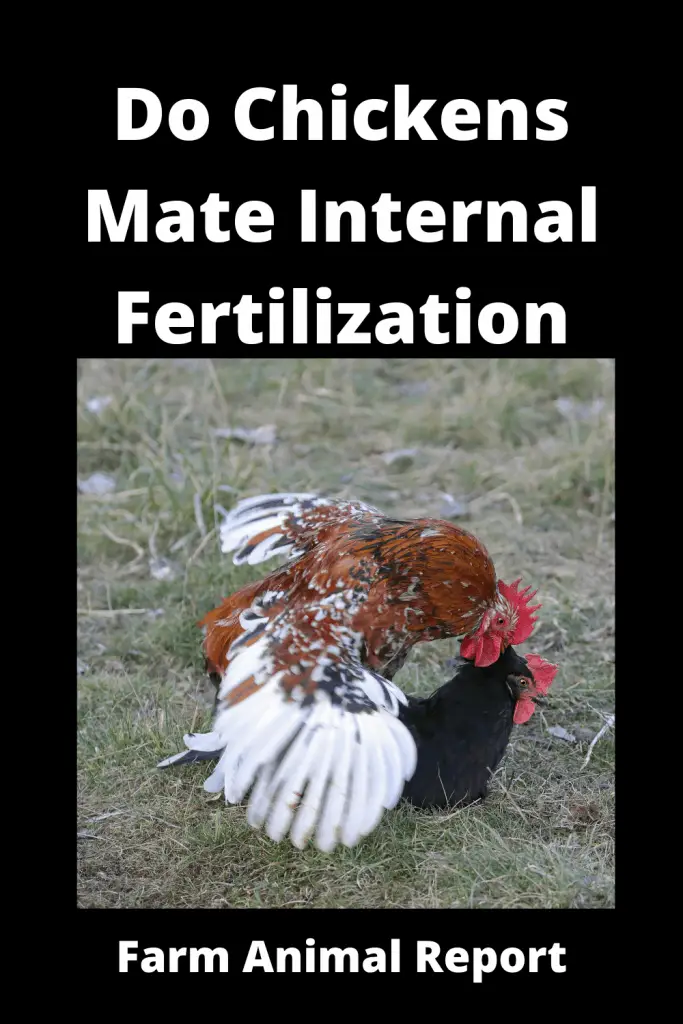
In this journey, which almost takes one week to reach the destination, the sperms pass through the shell gland of the hen, then the isthmus and magnum, and finally reach the infundibulum. Once inside the infundibulum, these sperms can remain alive for one week or more, waiting for the eggs which are not fully formed and lack shells. If there is a yolk inside the infundibulum, fertilization takes place instantly.
The eggs are formed as yolks, in the ovaries of the hen. A healthy young hen produces a single yolk every 24 to 26 hours. This yolk, when released from the ovaries, travels to the infundibulum, where she lay eggs, unfertilized eggs, or fertile eggs.
If there are sperms in the funnel-shaped organ, the germinal disc (called blastodisc) in the yolk will get fertilized to form an embryo. Once fed, the egg passes through the same route, through which the sperms traveled to reach the infundibulum. The only difference is that the yolk travels in the reverse direction and completes its structure to form a proper egg during the journey.
The yolk gets surrounded by the egg white in the magnum, whereas the formation of the shell membrane starts in the isthmus. From there, the yolk covered with egg white travels to the shell gland.
Where the shell formation is completed and hardened. The egg is ready to be laid, which is usually done in the middle of the day. Once the egg is laid, the hen is ready to start the formation of a new egg.
4. When are Eggs Fertile?
An egg will only yield a chick if the hen had mated with a rooster before the egg was formed. Most production-oriented farms do not have a rooster mating about unless it is a time to make a new batch of egg-laying hens, for chicks. This means almost all the eggs in the supermarket are unfertilized.
Roosters are most often seen in small or hobby flocks. With farm-fresh eggs obtained from a smaller crowd, it is likely that almost every egg is potentially fertile.
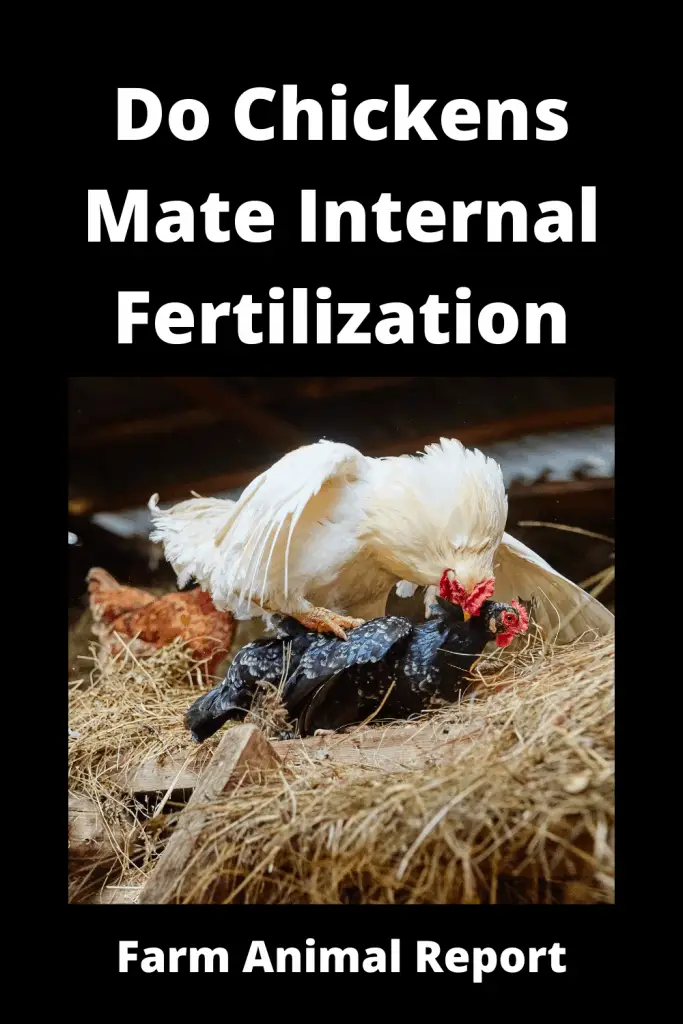
But do not worry, the embryo is usually merely a speck on the yolk and stops growing when the egg is refrigerated. Fertilized eggs require twenty-one days of incubation at a specific temperature (the temperature it would be under mother chicken) to produce chicks.
In outdoor conditions, chickens will breed when the days begin to get long in the spring. While the rooster will mate with his hens throughout the year, she topically only incubates eggs when conditions are optimal. A hen choosing to produce eggs is said to have gone ‘’broody hen’’.
5. Are all Chicken Eggs Fertilized? Fertilized and Unfertilized eggs
A healthy chicken may start laying eggs from the age of four to six months. The egg-laying age in chickens may vary with breed, climatic conditions, and various other factors. Even the number of eggs laid by chickens may differ from all these factors.
An average domestic hen may produce around five eggs a week. In between the egg-laying periods, these birds take a rest. In other words, they do not produce eggs for a small interval after an egg-laying period. Once a chicken starts laying eggs, the productivity is highest during the first year and tends to decline.
Now the question is whether all the eggs are fertilized? Once the young female chickens (better known as pullets) reach sexual maturity, they will start laying eggs. The chicken that reaches egg putting age will produce eggs, even if there are no roosters.
Mating and fertilization are not necessary for a chicken to produce eggs.
Most of the store-bought eggs are not fertilized, as roosters are not usually kept in the farms, to facilitate mating and fertilization.
Only when there is a demand for fertilized chicken eggs or when poultry owners need a batch of egg-laying hens, that they search for roosters. In short, you may not be able to hatch eggs by incubating table eggs, as there is no guarantee that such eggs are fertilized or not.
6. How Long does it Takes to Produce Fertile Eggs?
One of the questions regarding chicken egg fertilization is the period required for the production of fertile chicken eggs, from the date of mating. Various factors can affect the time period. In the case of a flock of fewer than ten hens, introducing a sexually mature rooster can produce faster results. Once the mating is done, the sperms travel to the infundibulum, which takes almost seven days.
So, you can expect fertilized eggs only after seven to ten days of mating. The hen may continue to produce fertilized eggs for the following week. Another factor is the number of hens in the flock. If a flock contains a fewer amount of hens, there are higher chances of getting fertilized eggs at the earliest. Even the age of the rooster and the hens may play a role in forming the fertile eggs. The older they get, the longer you have to wait for the fertilized eggs.
7. How to Identify Fertilized Chicken Eggs?
In short, the fertilized egg has an embryo, which is not found in the unfertilized one. A fertilized egg does not mean that it has a chicken inside it. It has an embryo, and this embryo is capable of producing a chick if incubated in its proper conditions.
The nucleus in a fertilized egg looks like a small flat disc with a ring around it. If refrigerated, fertilized eggs are like the unfertilized ones and do not develop further.
Most of the poultry farms have specialized candling equipment for identifying fertile chicken eggs. Candling of eggs can be done at home, with a bright LED flashlight.
As light passes through, unfertilized eggs will show round yolk, whereas fertilized ones are found to be opaque. If incubated, within two to three days, fertilized eggs will develop a network of veins, and you may also see the growing embryo at this stage.
You may even crack the eggs and search for fertilized blastodisc or blastoderm. It will be like a small white spot in unfertilized eggs, and infertile ones, you can find a more pronounced, bigger round about 8 inches in width around the white place.
The germinal disc should not be confused with the small white string-like structure seen in all eggs. Some people’s eggs with red spots are fertile ones. This is also incorrect because the red spot can develop in any egg during its development.
8. Are Fertilized Chicken Eggs Edible?
This is one of the common doubts about eggs. While some people detest the idea of consuming fertilized eggs, others consider them more nutritious as compared to unfertilized eggs. The fact is that fertilized eggs are the same as unfertilized ones in taste, appearance, and texture. It does not develop a chick without incubation. Apart from that, most of the store-bought chicken eggs are found to be unfertilized.
Now, you know how to identify unfertilized chicken eggs. If you want such eggs for hatching, get freshly fertilized chicken eggs. Fresh eggs are preferred for consumption too. Both fertilized and unfertilized chicken eggs can be used for this purpose.
9. Exciting Things About Chicken Reproduction
Following is some curious information about the reproductive tract of the chicken
- Asymmetrical gonads
- No copulatory organs
- Most of them are virgins
- Very productive
- Unique eggshell pigment
- Can’t be twins
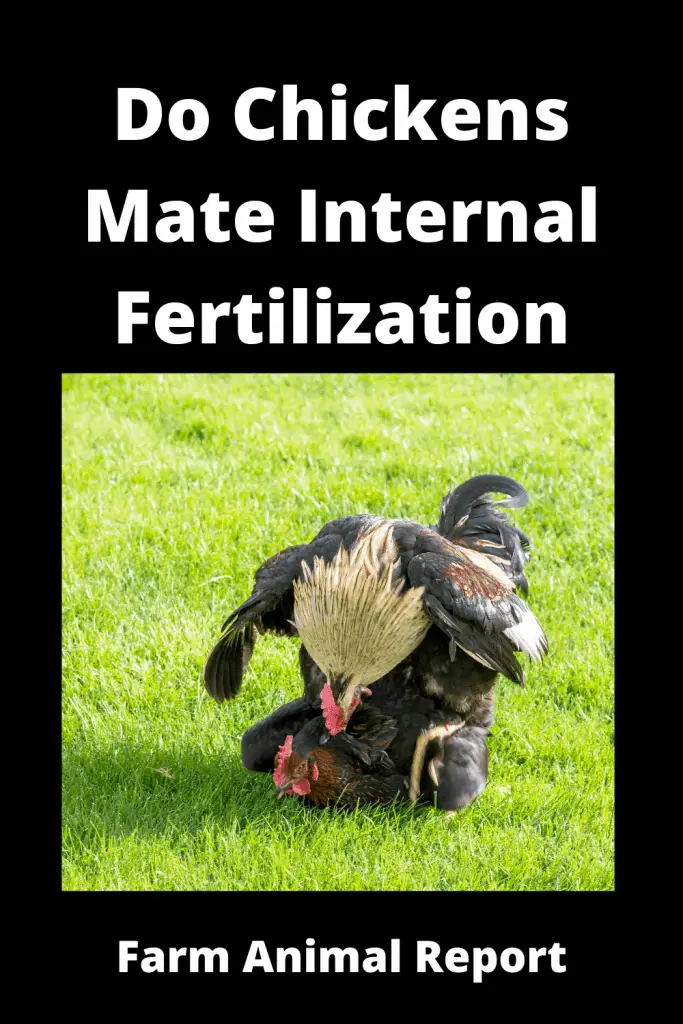
10. Chicken Asymmetrical Gonads
Usually, gonads are arranged; males have two testes, and females have two ovaries. Both genders usually have one gonad on the right side of the body, and one on the left is pretty simple.
In contrast, hens have only one functional ovary. Most of the birds have this lopsided anatomy, probably because it is more.
11. Chickens have No copulatory Organs
As with most birds, roosters and hens do not have external genitalia. Instead, both the rooster and chicken procreate using an opening called ‘’cloaca’’. When the cloacae are touched together, sperms are transferred into the female reproductive tract. Since no penetration is involved, this process is simply called ‘’ cloacal kiss’’.
12. Most Hens are Virgins
After a rooster inseminates a hen, her eggs will be fertilized for up to four weeks. This is because the sperm remains alive for about 30 days, stored in ‘’sperms nest’’ along the hen’s oviduct.
13. Hens Do Not Need a Rooster to Lay Eggs.
Very productive
Chickens are egg-laying machines. A hen hits puberty only 18 to 24 weeks after hatching out of an egg herself. It takes only 26 hours to make an egg. Roosters are only needed if you want fertile eggs, to produce Chicks.
Unique Eggshell Pigment
Out of twenty-six eggs required for making an egg, 20 hours are spent in producing the eggshell. The adding of pigment to the shell occurs during the last hours.
Egg Color is Crucial as it Describes the Fitness of the Bird.
Can’t be twins
Chicken produces twins when the ovary releases two yolks at the same time. Thus yolks are processed together down the chicken oviducts and a single shell forms around them. Thus two chicken embryos are encapsulated in the same egg. As the chickens are ready to hatch, they require air space at the top to crane their heads around and peck, so they fight each other instead and end up dying.
Family Sized Chicken Farm Egg Calculator
| Number of Chickens | Number of Eggs / Day | Number of Eggs / Week | Number of Eggs / Month | Number of Eggs / Year | Family Size | $ Value = .30 / Egg |
|---|---|---|---|---|---|---|
| 1 | .5 | 3.5 | 24 | 168 | 50.40 | |
| 2 | 1 | 7 | 28 | 336 | 1 | 100.80 |
| 3 | 1.5 | 10.5 | 42 | 504 | 151.20 | |
| 4 | 2 | 14 | 56 | 672 | 2 | 201.60 |
| 5 | 2.5 | 17.5 | 70 | 840 | 252.00 | |
| 6 | 3 | 21 | 84 | 1008 | 3 | 302.40 |
| 7 | 3.5 | 24.5 | 98 | 1176 | 352.80 | |
| 8 | 4 | 28 | 112 | 1344 | 4 | 403.20 |
| 9 | 4.5 | 31.5 | 126 | 1512 | 453.60 | |
| 10 | 5 | 35 | 140 | 1680 | 5 | 504.00 |
| 11 | 5.5 | 38.5 | 154 | 1848 | 554.40 | |
| 12 | 6 | 42 | 168 | 2016 | 6 | 604.80 |
| 13 | 6.5 | 45.5 | 182 | 2184 | 655.20 | |
| 14 | 7 | 49 | 196 | 2352 | 8 | 705.60 |
| 15 | 7.5 | 52.5 | 210 | 2520 | 756.00 | |
| 25 | 12.5 | 87.5 | 350 | 4200 | 1260.00 | |
| 50 | 25 | 175 | 700 | 8400 | 2520.00 | |
| 75 | 37.50 | 262.5 | 1050 | 12600 | 3780.00 | |
| 100 | 50 | 350 | 1400 | 16800 | 5040.00 |
Per Day / Per Week / Per Month / Per Year / Dollar Value
Chicken / Poultry Breeder Associations
| Rabbit Association | Location | Link |
|---|---|---|
| US Poultry & Egg Association | United States | USPA |
| American Poultry Association | California | APA |
| Ohio Poultry Association | Ohio | OPA |
| National Chicken Council | United States | NCC |
| British Poultry Council | United Kingdom | BPCE |
| Poultry Club of Great Britain | United Kingdom | PCGB |
| Association of Poultry Breeders in EU | Europe | AVEC |
| Australian Chicken Meat Federation Inc | Australia | ACMF |
| Australian Poultry Hub | Australia | Poultry Hub |


